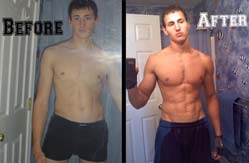 |
| Hair loss |
When hair starts falling out, it can seem like the end of the world. Follow these tips to try and reduce it as much as possible.
Steps
1) Try to identify when the hair loss started and if you changed anything with your hair. For example, if you started straightening it or if you started applying lots of mousse. It is likely that this could be the reason. If you find it was due to the use of these things then stop using them.
2) Stick to one shampoo or shower gel. If it is repeatedly changed it could cause damage to your hair as shampoos aren't natural, you would be adding more and more chemical products in your hair which could damage them and cause them to fall out.
3) Oiling the hair also helps with coconut oil for example. By doing this, when you go out the pollution in the environment won't stick straight onto your hair and damage it. It will stick to the oil instead which can be washed off when you get home.
4) Wash your hair regularly, unclean hair could contain lots of damaging things. Frequent washing can help keep hair clean and healthy.
5) Wash your hair with warm to normal temperature water.Too much hot water can also damage the hair.
6) Try and reduce stress or anxiety that is getting to you. Tension and anxiety do not help as you will be so worried your body won't be mentally healthy so this will lead to physical deterioration too which includes hair loss.
7) Do daily scalp massages as it will increase blood flow in the scalp, sending it to the hair follicles to help stimulate growth.
8) Try to use more herbal products, avoid using chemical products. They can damage hair.
Tips
- Try not to use straighteners, curlers or other chemical products such as dyes excessively, these can damage your hair if used too frequently.
- Oiling your hair can help keep hair healthier.
- Stick to one shampoo or gel.
- As you get older, your hair gets weaker so don't be too worried if a few strands of hair falling occasionally.
- Try to relax and have an optimistic view on things. A healthy mind leads to a healthy body.
- Doing 'Headstand' pose of yoga for about a minute daily reduces the hair fall. But please consult your doctor before doing this pose.
Warnings
- If you have tried all of the above methods and nothing seems to be working, see your doctor as in some cases it could be a symptom of a more serious problem.
Credit to: http://www.wikihow.com/





















































